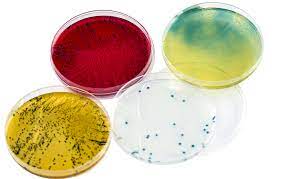Products
- Home >
- Products >
-
Condalab 0985 Legionella Agar (CYE / GVPC) ISO 11731 Pack of 20 plates
Condalab 0985 Legionella Agar (CYE / GVPC) ISO 11731 Pack of 20 plates
Legionella Agar (CYE / GVPC) ISO
- CATALOGUE NUMBER: 0985 Selective medium for the cultivation of Legionella
- Applications Legionella Selective enumeration Industry Water
- Regulations ISO 11731
- Pack size*20 Plates
- Solid medium used for the detection, isolation, and enumeration of Legionella in water according to ISO 11731 standards.
- Expiration 3 months
- Storage 2-14ºC
- Packaging 20 Plates 90 mm Boxed 1 box with 2 packs of 10 plates, individually wrapped in a cellophane bag.
FORMULA
| Activated charcoal | 2 | Bacteriological agar | 13 | |
| Yeast extract | 10 |
Description:
The current formulation of this medium has been made in accordance with ISO 11731 standards, but BCYE agar is based on a modification of previously described media. In 1979, Freeley et al. described Charcoal Yeast Extract (CYE) agar as a modification of F-G agar. They replaced the starch in F-G agar with activated charcoal and substituted casein hydrolysate with yeast extract, resulting in improved recovery of Legionella pneumophila. Pasculle, in 1980, reported that CYE agar could be enhanced by buffering it with ACES buffer, and a year later, Edelstein increased the medium's sensitivity by adding alpha-ketoglutarate.
BCYE agar consists of a basal medium supplemented with essential growth factors for Legionella, and selectivity is achieved by supplementing the medium with inhibitors to suppress undesired accompanying microbiota. Yeast extract provides the basic nutrients as the medium does not contain any fermentable sugars. L-Cysteine, ferric pyrophosphate, and alpha-ketoglutarate are incorporated as essential growth factors for Legionella. Activated charcoal breaks down hydrogen peroxide, a toxic metabolic product, can also absorb CO2, and modifies surface tension. The addition of ACES buffer helps maintain the appropriate pH for optimal growth. Selectivity is achieved by adding Vancomycin or Sodium Cefazolin, which are active against Gram-positive bacteria, Polymyxin B, which acts against Gram-negative bacteria, Anisomycin, which is broad-spectrum, and Cycloheximide or Natamycin, which are fungicides that inhibit yeasts effectively.
Technique:
For obtaining isolated colonies from different samples, refer to any standardized methodology, e.g., ISO 11731:2017.
Inoculated plates are allowed to absorb the inoculum and then incubated inverted at 36 ± 2ºC for 2, 3, 5, or 10 days. To ensure sufficient humidity, it is recommended to place a container with water in the incubator and refill it if necessary each time the plates are examined. Incubation in an atmosphere of air with 2.5% (v/v) CO2 can be beneficial for the growth of some Legionella species but is not critical.
The plates should be examined under a suitable magnifying glass, at least on three occasions at intervals of 2, 3, 5 days during the incubation period (10 days), as Legionella grows slowly and may be masked by the growth of other microorganisms. Note the number of each recognized colony type present.
Legionella colonies are often white-grayish-blue-purple, but they can be brown, dark red, light green, and even pink. They are mucoid, with an entire edge, and have a characteristic appearance of quartz grain. Under ultraviolet light, colonies of some species exhibit bright white autofluorescence, while others appear red, and Legionella pneumophila appears as dark green with yellowish tints. In any case, presumptive colonies should be confirmed by cultural, biochemical, serological, and genetic methods.
Note: If the medium is used with the membrane filtration method, it should be noted that the color and size of colonies may be modified by the composition and type of the membrane. Therefore, it is recommended that users of the medium validate the specific type of membrane used in advance.
